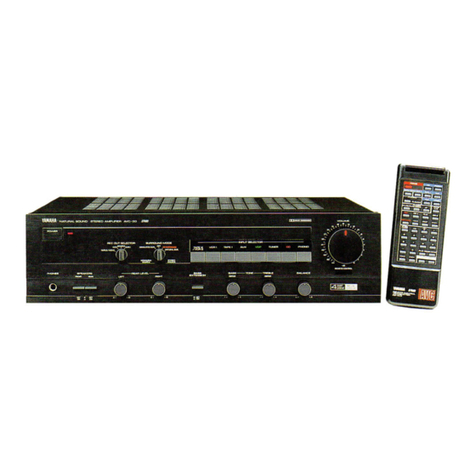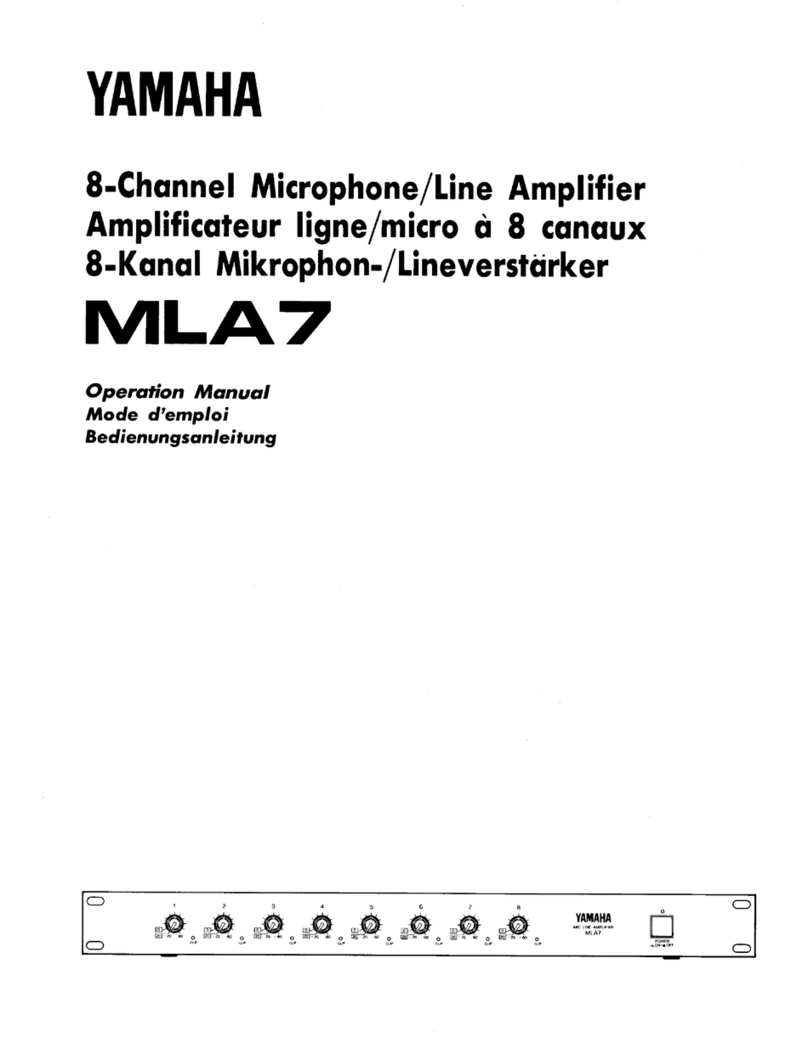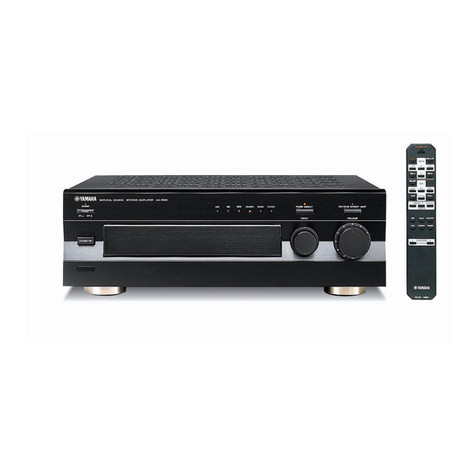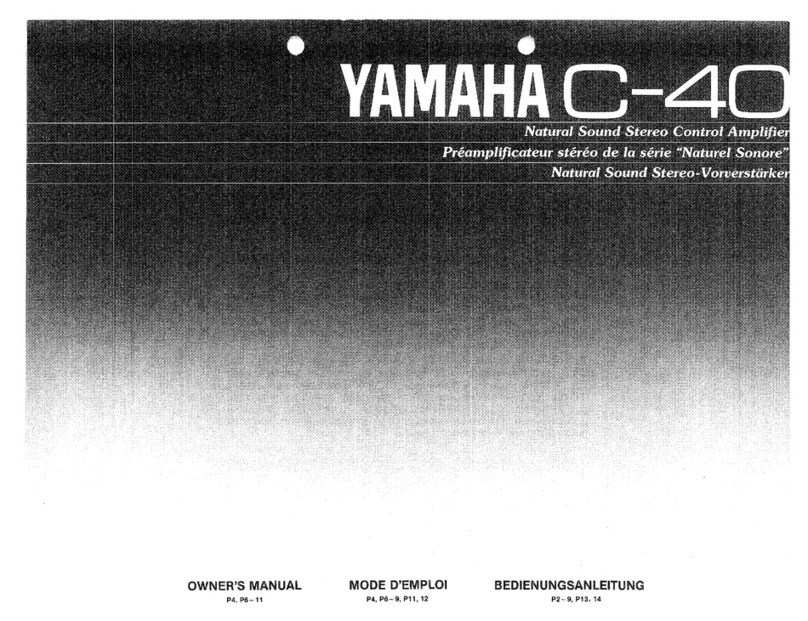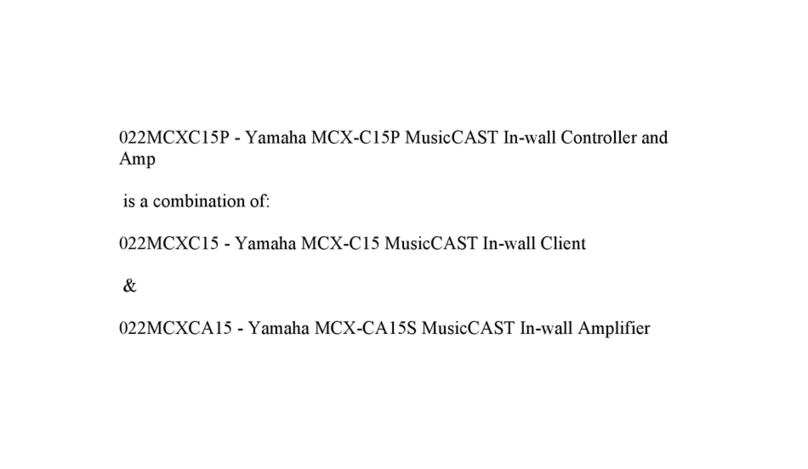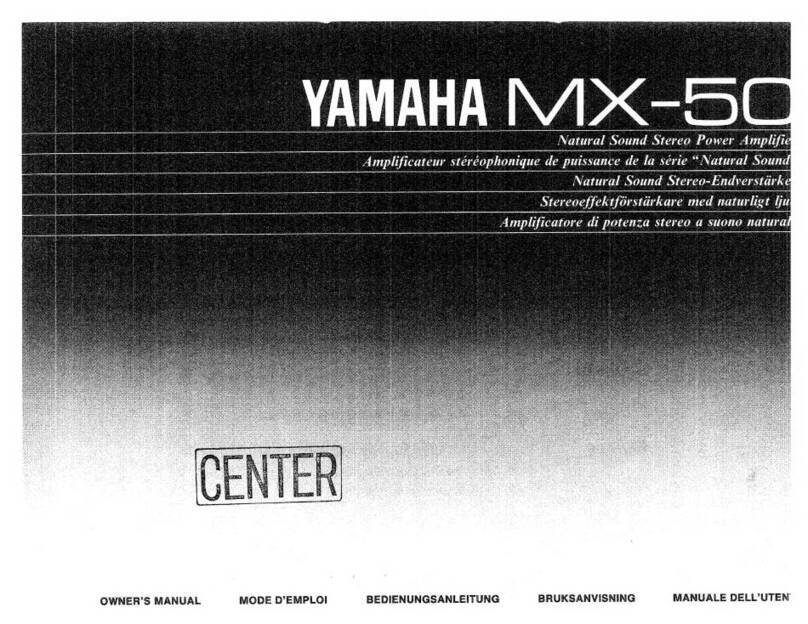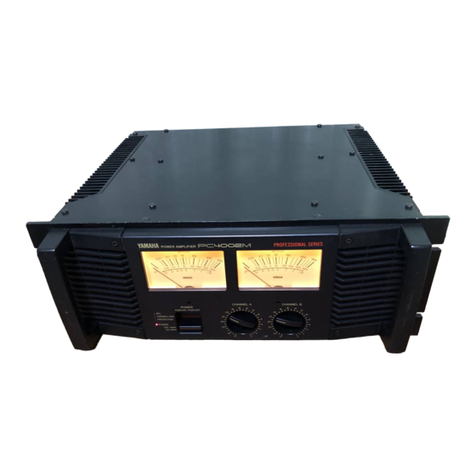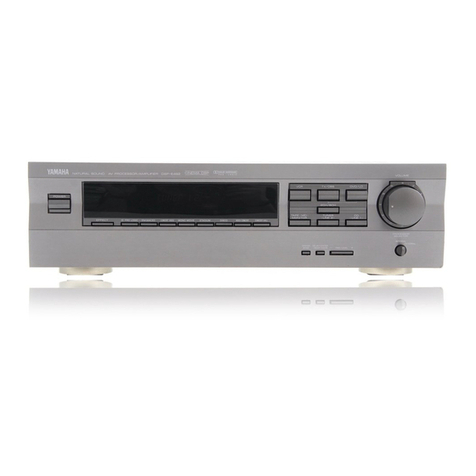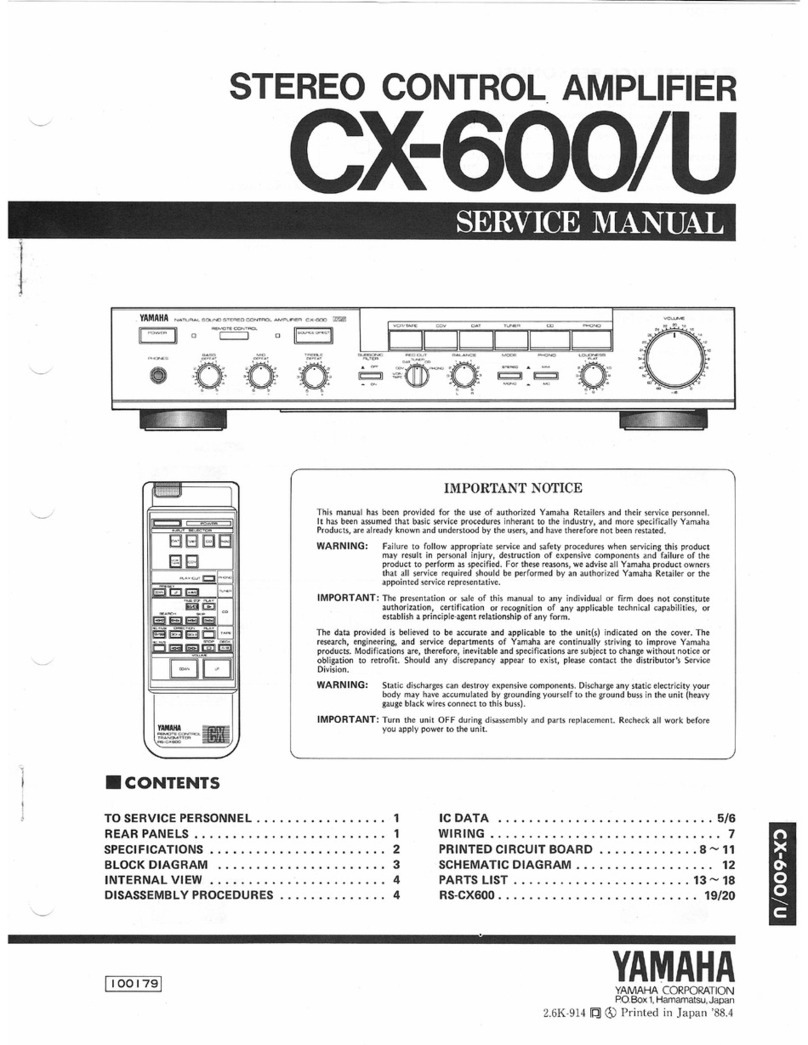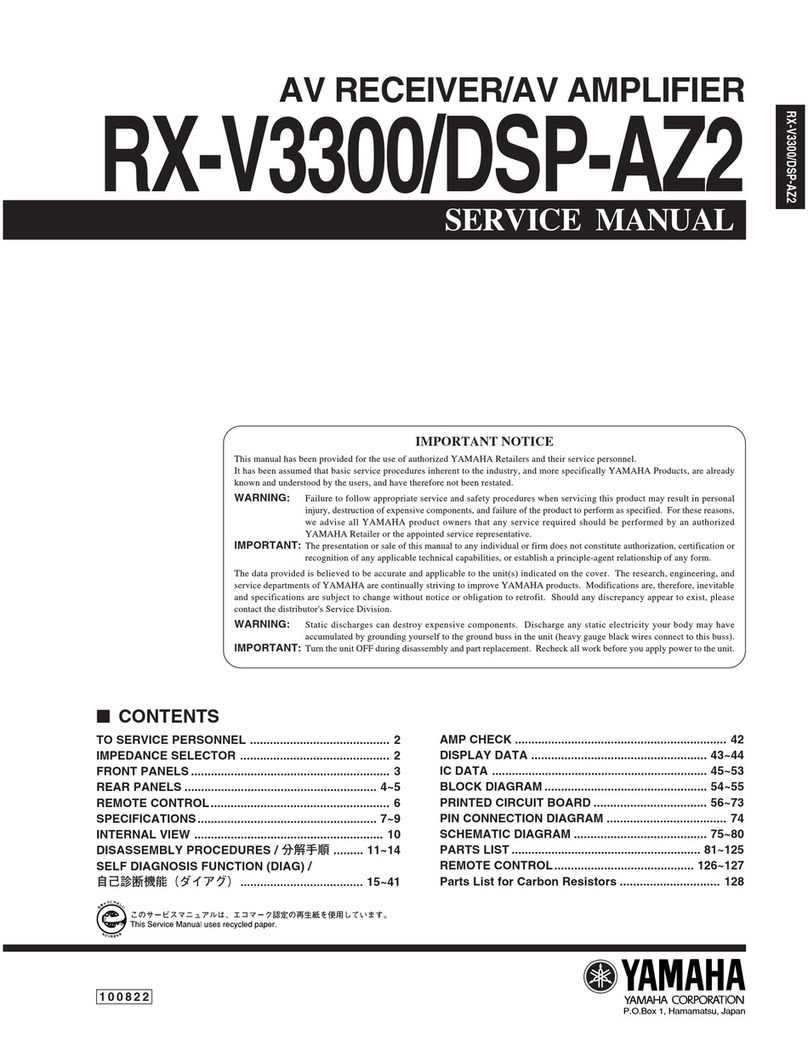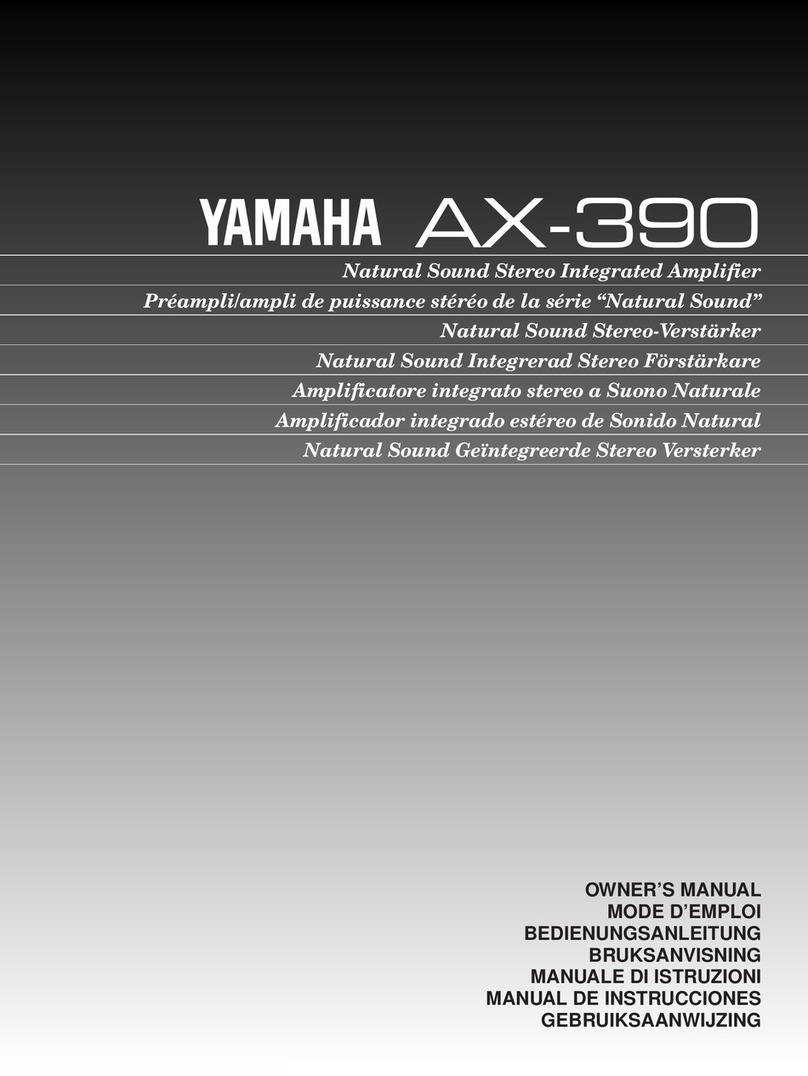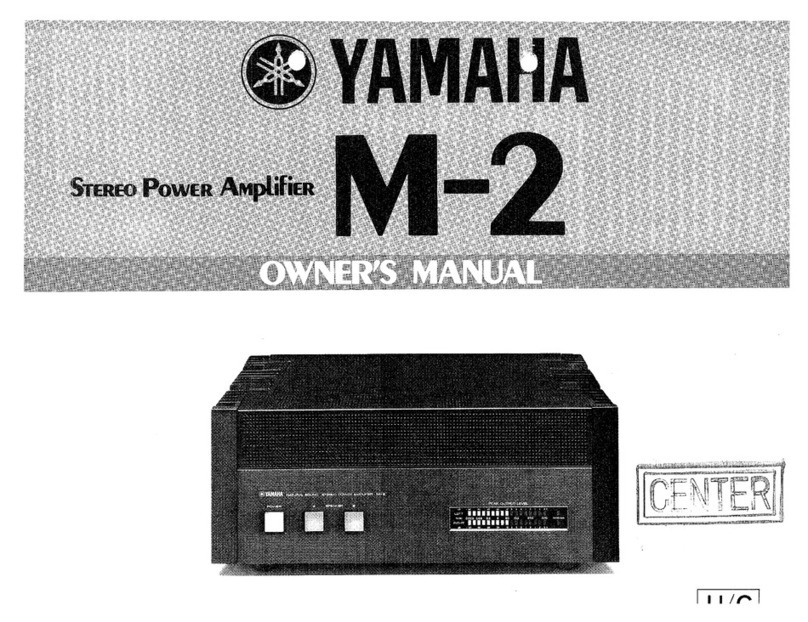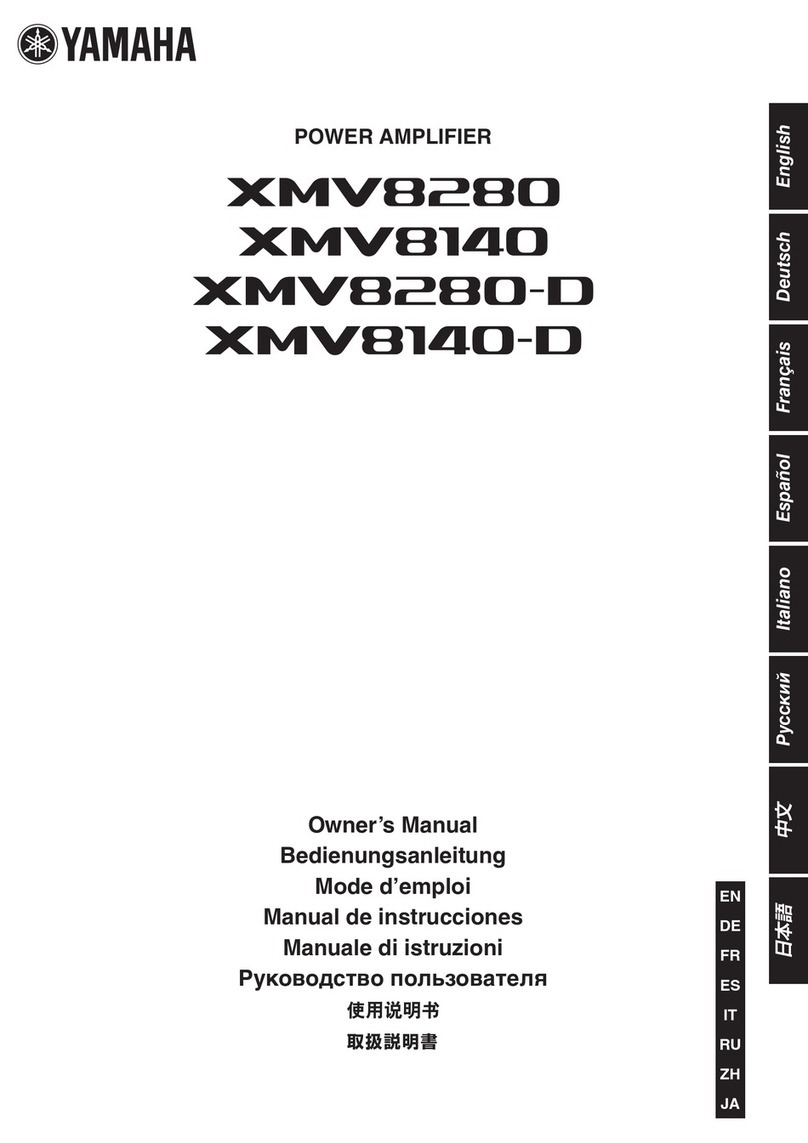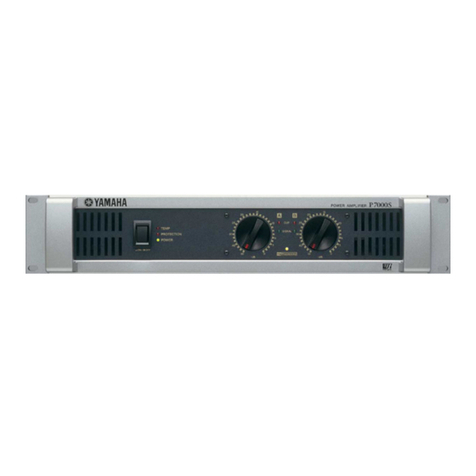When speakers are connected in parallel, often the case with subwoofers or line
arrays, stability at lower impedance becomes extremely important. The actual
impedance curve of a speaker unit is complex and its load varies greatly
depending on frequency. The actual impedance of a speaker is often lower than
its nominal impedance under certain frequencies, putting excessive stress on
the amplifier especially if multiple speakers are connected in parallel. The TXn
series are designed to perform with ease even under demanding low impedance
conditions, always maintaining top quality performance. Some of the many
refinements implemented to provide stable low-impedance drive capability
include newly developed thin-film power transistors and flat-wire power
transformer windings to minimize heat loss. Many other details contribute, but
the final result is totally stable drive capability down to two ohms.
Input Attenuator (0.5 dB steps)
Gain/Sensitivity (0.1 dB steps)
Input Type:
• Card Slot
(AES/EBU, EtherSound*, CobraNet*, Analog*)
* Optional MY card required.
Signal redundancy:
• Card slot with analog backup
• Card slot with analog override
Amplifier Mode: • Stereo •Bridge • Parallel
Input Mixer
Attenuator Link and Limits
Selectable Metering
Always maintaining headroom - Stable operation at 2 ohms
On top of the outstanding basic performance offered by the TXn series power
amps, they are equipped with some of the most advanced and flexible DSP
(Digital Signal Processing) capabilities available. Yamaha is an acknowledged
leader in the field of digital signal processing, and the full weight of that
technology has been brought to bear in these cutting-edge power amplifiers. All
three TXn models incorporate advanced 24-bit 96-kHz DSP capability that
employs Yamaha’s own DSP7 LSI (the same LSI that provides the processing
power for Yamaha’s industry-standard digital mixing consoles) as well as
powerful SHARC processing technology. In addition to outstanding sound quality
and low latency, an extraordinary selection of control and processing
capabilities are provided, ranging from basic amplifier settings through input
and speaker processing to comprehensive status monitoring. The built-in input
and speaker processing capabilities are so extensive and powerful, in fact, that
external processors will be unnecessary in many applications. The onboard DSP
parameters and functions can be accessed directly through the LCD and button
interface provided on the front panel of the amplifier, or via Yamaha's
NetworkAmp Manager II software running on a computer connected via
Ethernet. NetworkAmp Manager II control provides additional advantages and
capabilities for controlling large systems that employ numerous amplifiers
(NetworkAmp Manager II is discussed in more detail on the following page).
Versatile Onboard DSP
The chart below lists most of the monitoring, control, and processing functions
provided by the TXn series amplifiers. Unless otherwise noted these functions
can be accessed directly via the amplifier’s own display and controls. The
NetworkAmp Manager II software described on the following page offers more
comprehensive displays and easier control, as well as centralized management
of entire multi-amplifier systems.
DSP Features and Functions
The TXn amplifiers feature a dual mono configuration: the mono amplifiers
are arranged symmetrically on each side of the chassis, each with its own
independent power supply. This configuration effectively eliminates
performance-degrading interference between channels while maintaining
optimum separation and superior definition under all operating conditions
and with all types of source material. Sudden high power demands in one
channel will not affect the performance of the other, for example. The two
power supplies operate in opposing phases to cancel noise while minimizing
electromagnetic interference.
Dual-mono Configuration with Independent Power Supplies
Original Yamaha EEEngine technology reduces power consumption by
approximately 50% compared to conventional amplifiers while maintaining
full Class AB reproduction quality and fast response. Power mains quality and
capacity become significant issues in large-scale live sound systems, but the
ability of the TXn series amplifiers to deliver high power output with
dramatically reduced power consumption goes a long way towards alleviating
the problem. In addition to less susceptibility to imperfect mains supplies,
lower power consumption also achieves reduced heat generation, significantly
increasing part life and reliability. In order to achieve stable 2-ohm drive
capability the EEEngine circuitry in the TXn series amplifiers features a newly
developed high-efficiency FET current buffer drive circuit. Only Yamaha can
deliver this level of high efficiency and stability with low-impedance loads.
EEEngine Efficiency
Amplifier Control & Settings
Level, Mute
Polarity
Crossover (LPF/HPF):
• 6 dB/Oct • Adjustable Fc Gain* • Bessel*
• Butterworth • Linkwitz-Riley*
Delay:
Up to 500 milliseconds in 0.01
millisecond increments (1 sample, 0.1 meter, or
0.1 feet steps selectable via NetworkAmp Manager II).
EQ (6 Bands per Output Channel):
• PEQ • Low/High Shelving (6 or 12 dB/Oct)
• All Pass (for phase matching) • Horn EQ
Limiter
Speaker Library:
• Yamaha speaker libraries pre-installed
• Other libraries can be loaded as required
• Edit security provided
*12, 18, 24, 36, or 48 dB/Oct
Speaker Processing
Switchable Clip Limiter
Voltage Limiter
Power Limiter
Overheat Limiter
Low Impedance/Short Circuit Mute
(10-sec. reset)
Output DC Mute
VHF Limiter
Current Limiter
DSP/CPU-based Protection
Password Lockout of Display and
Mute Button
Security
Input Card Routing
Mute
Polarity
Level
4-in/4-out Matrix Mixer
Polarity
EQ
(8 Bands per Input Channel)
:
• 6-band Parametric EQ
• 2-band Selectable EQ (PEQ, Low/High Shelving, LPF/HPF)
Delay:
Up to 1300 milliseconds in 0.01 millisecond increments
(1 sample,
0.1 meter, or 0.1 feet steps selectable via NetworkAmp Manager II).
Oscillator: • Pink Noise • Burst Noise
• Variable Frequency Sine Wave
Polarity
4-in/2-out Matrix Mixer
Input Routing and Processing
TX6n internal layout
Ethernet device
1
1
Class AB power amplifier
2
EEEngine high speed voltage buffer
3
EEEngine high speed current buffer
4
MY card slot
5
200V primary capacitor
7
DSP7+SharcDSP
8
Precision current sensor(load monitor)
6
Transformer
9
250V secondary capacitor
10
LCD 0.5dB step attenuator
11
: Mono Amp x 2 = Dual Mono Amp structure
2
3
4
5
9
8
6
7
10
11
Superlative Power Performance Combined
with Cutting-edge DSP and Unrivalled Flexibility
NetworkAmp Manager II Screen view
